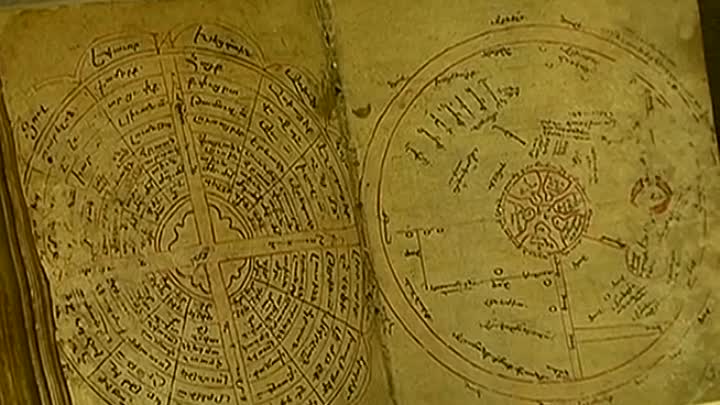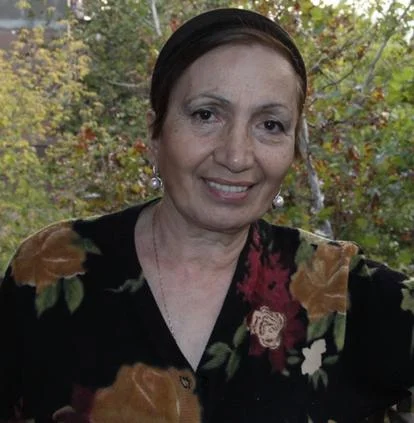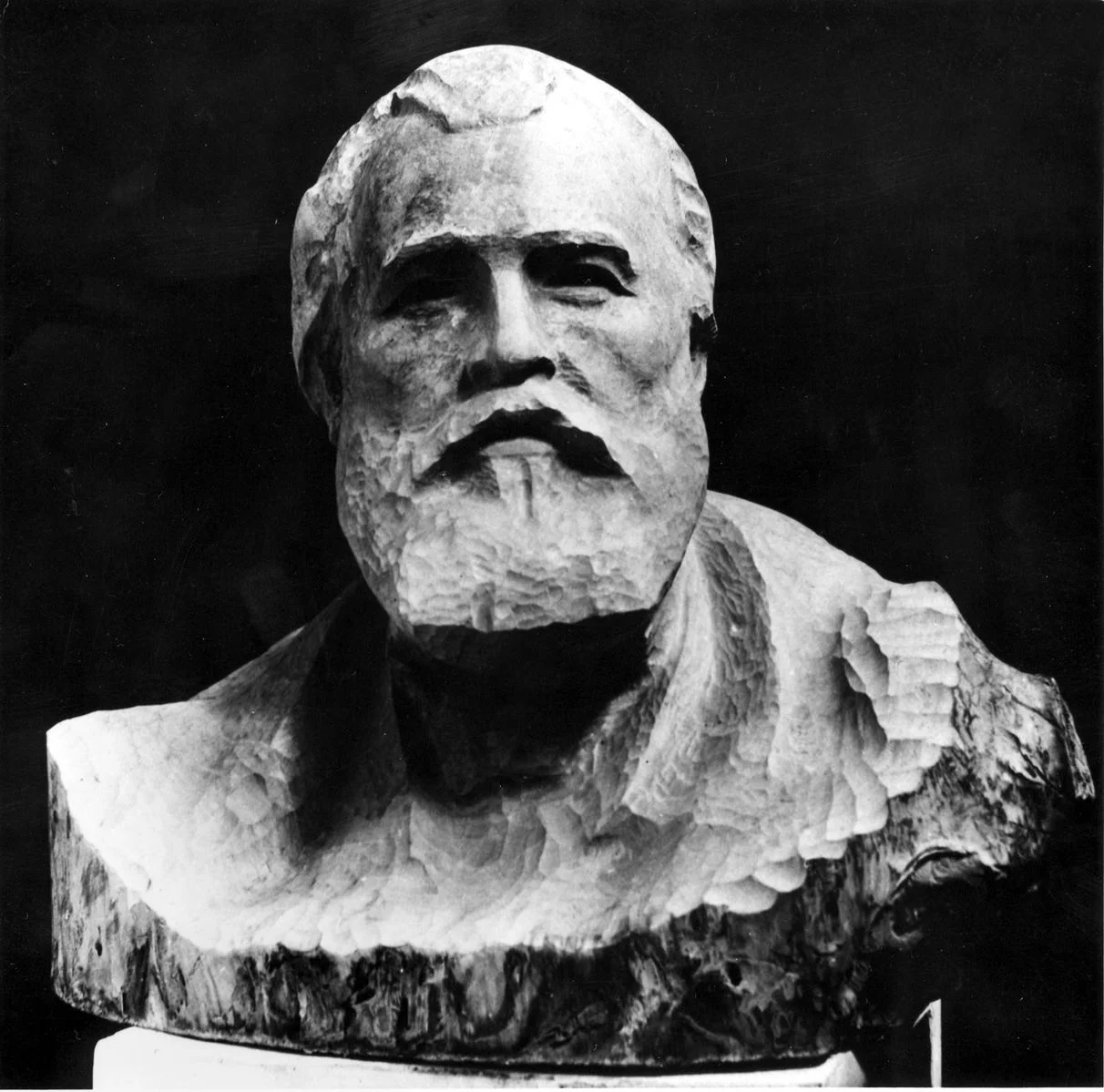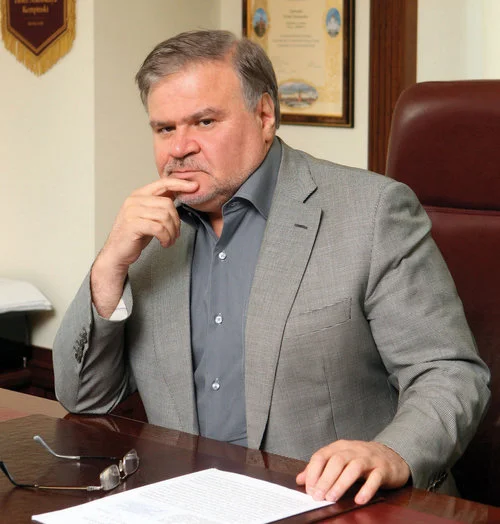Literature
The exposition demonstrates the rich cultural heritage of the Armenians that is preserved and transmitted in texts from antiquity to our time. Armenian literature is about two-millennia old. Here you can get acquainted with its history and the most significant representatives.
Ancient Armenian literature
The history of ancient Armenian literature extends from mythmaking to Christian religious texts and scientific treatises .
Myths, legends and fairy tales
The origins of the Armenian literature can be found in the traditions of oral poetry and mythology of the Armenian highlands and they further develop in close interrelations with the cultures of Asia Minor and Mesopotamia. The Armenian pantheon of gods has parallels with that of Indo-Iranian, Assyrian-Babylonian and Hurri gods.
The heroic epic «The Daredevils of Sasun» or «Sasna Tsrer» is the pearl of the Armenian oral literature heritage. It tells the story of four generations of Armenian soldiers.
The first part - «Sanasar and Baghdasar», is about the twins, born by Princess Tsovinar from taking two sips of water. «Mher the Elder» is about one of the three sons of Sanasar. Mher dies right after the birth of his son David, the protagonist of the epic and the savior of the Armenian people.
David's son Mher, according to one version of the myth, locked himself in the rocks of Lake Van to come out at the end of time. For many centuries the history of the daredevils of the country Sasun has been passed from mouth to mouth. For the first time the epic was recorded in 1873 by Garegin Srvadztyants. Currently, there are about 50 recorded versions from different parts of Armenia. In 1902, the literary version of «Sasuntsi David», created by Hovhannes Tumanyan, was published, but it only touches upon the first part of the myth about David.
Verbal Culture
Armenian written culture begins with cuneiform inscriptions (the beginning of the 1st millennium BC), which have been transmitted to us from the Urartu era. The verbal culture of ancient Armenia is characterized by multilingualism.
....
For example, in the 1-st century BC. during the Hellenistic culture blossom in the capitals of Tigranakert and Artashat, Greek tragedies were staged. The people widely disseminated gusan performances in Armenian, recitations of epic tales, accompanied by musical instruments.
With the proclamation of Christianity in Armenia as a state religion, on the one hand, new rituals and ceremonies were introduced, which incorporated pagan customs, on the other hand, monuments of pre-Christian culture were destroyed almost everywhere .
V century – «Golden age» of ancient Armenian literature
During the reign of King Vramshapuh, Archimandrite Mesrop Mashtots and Catholicos Sahak Partev began to work on the creation of the Armenian alphabet. In 405, Mashtots created an alphabet of 36 letters.
....
V century, later called golden, was marked by the translation of the Bible from the Greek language. The theological works of Ephraim the Syrian, Gregory of Nazianzus, John Chrysostom, the ancient philosophers such as Aristotle, Plato, Porphyry were translated. In the V century, the Armenian philosophical school was formed.
The genres of ecclesiastical literature were developed - canons, epistles, and speeches. Unique kinds of hymns were created: taghs, meghedis and sharakans.
The first historical work is considered to be «The life of Mashtots», written by Koryun in approximately 443-450 AD. It is closer to the antique biography genre than to that of hagiographic literature. A special role in the history of the Armenian artistic expression belongs to the work by Agatangeho: «The History of Armenia», dedicated to the adoption of Christianity.
The rise of the Armenian literature of the 5th century can be defined by the work of Movses Khorenatsi – «father of the Armenian historiography», «father of poets», «father of grammarians». «History of Armenia» by Khorenatsi, written on the instructions of Prince Sahak Bagratuni, is a work based on original sources. Khorenatsi highlights the history of Armenia from ancient times to the end of the 5th century. Thanks to this work, many monuments of epic and folklore cultural heritage of the Armenian people were preserved: legends about Hayk and Bel, Aram, Ara and Shamiram, Vahagn.
....
The period after the V century
After some decline in the VI century, the development of literature in the VII century and in the beginning of the VIII century, despite the difficult conditions of existence during the reign of the Arab Caliphate, continues in many directions: dogmatic literature, religious songs of Anania Shirakatsi, Hovhan Odznetsi, which were included in the collection of «Sharaknots».
....
In the VII century, talented historians and writers continued the traditions of the 5th century. The works of Sebeos, Movses Kaghankatvatsi, Hovhan Mamikonyan, Ghevond are sources of valuable information on the history of Byzantium, Persia, Albania and Georgia.
A representative of natural science and philosophy of the VII century is Anania Shirakatsi. He left a great heritage in various fields of science: mathematics, cosmography, geography. His taskbook, named «Problems and solutions» is the oldest textbook that survived to us, containing addition, subtraction and multiplication tables. He defended Ptolemy's theory of the sphericity of the earth, his views on many phenomena - the absence of light from the moon, the origin of day and night, the nature of eclipses, outstripped his time.
Medieval Armenian Literature
Armenian literature, beginning with the X century, starts to experience a new upsurge, related to political, economic and social changes in Armenia, and, first of all, to the restoration of the Armenian Kingdom. Historians and cultural experts often call the period of the X-XIV centuries the Armenian Renaissance.
The X-XII centuries
After liberation from the Arab yoke in the X century, one after another independent Armenian kingdoms emerged: Bagratunis, Artsrunis, Rubenids, Syunik kingdom. The development of cities and anti-feudal movements created the prerequisites for the development of new arts, going beyond the framework of the church canons.
Works of the first great Armenian poet, theologian and musician of the Middle Ages Grigor Narekatsi (the 10th century) are among the most precious masterpieces of the Armenian national literature. Subsequent generations of Armenian poets addressed philosophical and mystical revelations and the artistic discoveries of his poem, «A Book of Mournful Chants», which were absolutely unique for his time.
The poet and theologian, the rhetorician, composer, Catholicos of Cilicia Nerses Shnorali (1101-1173) brough poetic quality of church hymns to a higher level, enriching them with new images. His lyric-epic poem « Voghb Yedesio» (Lament on Edessa) is of special artistic value. Nerses Shnorali played a great role in the development of Armenian versification: before him there was only a mono-rhythm genre, but he introduced various rhymes, first used the method of personification, which was later actively used by Armenian poets in the dimensions of folk poetry.
New genres developed: fables, odes, stories, talks, biographies. A prominent fabulist and the founder of the Armenian author’s fable was Mkhitar Gosh (1130-1213). Gosh is the author of «The Lawcode», which testifies to the high level of legal and moral consciousness. Mkhitar Gosh’s Lawcode has been used up to the XIX century.
Another Armenian fabulist Vardan Aygektsi - the creator of many fables, combined his works in «Aghvesagirq» (The Fox Book), which later included many other folk and translated fables. Fables, parables, the edifying stories by Aygektsi absorbed people's humor and satire, reflected the social contrasts of the time.
XIII–XVI
centuries
Beginning from the XIII century Grabar or old Armenian started to be replaced by spoken folk language in the literature, which is known as Middle Armenian.
Frick (born 1230/1240 – died in the beginning of the 14th century) laid the foundations of poetry with emphasized social motives for protesting against an unjust world order. He left more than fifty poems written in the genres of lamentation, teaching and complaint.
Outstanding representatives of medieval Armenian poetry of the XIV century Hovhannes Erznkatsi and Konstandin Erznkatsi, along with traditional religious themes, developed philosophical and meditative lyrics, introduced purely love motives and asserted humanistic ideals. The form of folk love poems – hayrens was also created in this period.
In poetry, the topics of wanderings, exile are developed, expressing peoples’ longing for motherland. Being widely spread in folk poetry, it contributed to the formation of patriotic poetry, civic ideals. The representative of secular art, lyricist Nahapet Quchak of the XVI century brought life-affirming sentiments to poetry, sang a woman and worldly joys. In the laconic form of the popular hayrens he expressed the beauty of the world and the human soul, the highest expression of which is love.
Historical prose of the XIII-XVI centuries is represented by the names of Kirakos Gandzaketsi, Vardan Patmich, Smbat Gundestabl, Stepanos Orbelian, Grigor Aknetsi, Tovma Metsopetsi and many others.
Diaspora writers
Regardless of the fact Armenian diaspora writers had left Armenia or already were born in another country, their literary heritage is inextricably linked with thoughts about the motherland and destiny of the Armenian people.
New Armenian Literature
Starting from the XVI century, literature mainly develops outside of historical Armenia. Centers of education and book printing were established in Venice, Constantinople, Rome, Amsterdam, Madras, Calcutta and other places where there were Armenian colonies. In the XVIII century the Congregation of the Holy Fathers of the Mkhitarists on the island of Saint Lazarus in Venice played a significant role in the preservation and development of the Armenian culture, literature, printing, education and science.
XVII–XVIII centuries
Armenian historiography revived in the XVII century when significant historical works were created. The historical poem by Martiros Ghrimetsi «Armenian kings' reign order and dates» can be emphasized among the most noteworthy ones. In the XVII century, a separate type of historical chronography - travel notes, were formed.
In manuscripts of the XVII-XVIII centuries, some dramatic works were preserved, the oldest of which is the first Armenian drama «The Death of Saint Hripsime», staged in the Armenian Catholic school of Lviv in 1668.
The peak of the development of medieval lyric poetry and the manifestation of new trends is the works of the poet and ashugh Sayat-Nova, who created unique samples of love lyric poetry (he also wrote in Georgian and Turkic). In his poems, he expressed the experience of selfless love, created colorful, expressive means of describing the image of the beloved. Humanism, spirit, fighting for the individual’s freedom and opposing the stagnant environment, the beauty of oriental poems, combined with deep penetration into the human’s inner world give us reasons to consider his poetry as a unique phenomenon in the poetry of the late Middle Ages, and the author - the predecessor of romanticism in Armenian and Georgian poetry.
XIX century
In the literature of the second half of the XVIII - early XIX centuries classicism was the dominant direction. Its representatives wrote in the ancient Armenian language – grabar, inaccessible to a wide range of readers.
Folk and ashugh poetry represented literature in a language, understandable for the people. Since the 1820s, the writings of the so-called «transition period» writers began to form a new Armenian literary language - ashkharhabar.
The affirmation of romanticism and the beginning of new Armenian literature is related to the name of the illuminator and democrat Khachatur Abovyan. Abovyan left a rich literary heritage in various genres. He wrote in ashkharhabar. The most famous work by Abovyan is the novel «Wounds of Armenia», dedicated to the events of 1826-1828, the time of the annexation of Eastern Armenia to Russia.
The founder of the new Armenian realistic drama was Gabriel Sundukyan. In the plays «Khatabala», «Pepo», the spiritual purity and morality of the working class are contrasted to the the bourgeoisie’s greed and unscrupulousness.
Tserents and Raffi were the novelists who expressed the ideas of the national liberation movement of 1870-1880s, writing mainly in the genre of the historical novel. Raffi is the author of numerous works in various genres. He is an outstanding master of monumental epic: novels «David Bek», «Paruyr Haykazn» and a masterpiece of national historical prose novel «Samvel».
Critical realism becomes the leading direction in the 1880s and 1890s. A pleiad of prose writers such as Nar-Dos, Muratsan, novelist and playwright Alexander Shirvanzade start creating their masterpieces in this period.
Works of Hovhannes Tumanyan, known as «all-Armenian poet», became the synthesis of the traditional Armenian literature of the XIX century and Armenian classical poetry. He combined folk word-making with literary one, bringing a new quality to poetry and literary language.
XX century literature
Armenian literature of the beginning of the XXth century is distinguished by the simultaneous existence of several directions - realism, romanticism, symbolism, avant-garde, as well as marked by the rise of poetry. Postwar years were marked by works in the genre of historical novel. Poetry becomes the leading genre, while prose acquires new characteristics - lyrical miniature, psychological story.
First half of XX-th century
The most significant phenomenon of the XXth century literature was the activities of the literary circle, called «Vernatun» under Hovhannes Tumanyan’s leadership.
The participants of «Vernatun» considered themselves the heirs of the great scholar-philologist, reformer of the Armenian pedagogical system and the founder of new Armenian literature Khachatur Abovyan. «Vernatun» was founded in 1899 in Tiflis. It was this literary circle that set the Armenian literature further development vector. In 1916, thanks to Valery Bryusov's efforts, the book «Poetry of Armenia from ancient times to our days» was published in Moscow. The anthology presented the translations of the main works of the Armenian literature.
After sovietization of Armenia, difficult times began in the Armenian literature. A significant part of the society, as well as all over the world, was fascinated by the ideas of Marxism, which greatly affected the literary flows and was dangerous in terms of preservation of the previous generations' literary heritage. The most significant figure in the proletarian poetry was Eghishe Charents. In 1920 (the year of Armenia’s sovietization), he proclaimed the «Manifesto of Three» - a declaration against «bourgeois» literature. Hovhannes Tumanyan also fell under the severe verdict of Charents. Charents's works are a treasure of world literature. The poem «Curly Boy», in which the poet describes the beautiful future of Armenia, became a symbolic work by him. The image of the boy became a symbol of New Armenia.
Proletarian literature, glorifying Lenin, Stalin, and communist ideas, appeared in many circular publications. In the 1930s, the most difficult times for Armenian literature began. Works of Raffi, Shant, as well as all poets and writers related to the ideas of liberation war were prohibited.
In the late 1930s, the topics of heroic battle, authoritarian rule, the issue of betrayal and devotion became more and more urgent. Images of valiant warriors of antiquity and kings-generals became the most popular in art. So, in the 1940s, the screen version of Ghazaros Aghayan's fairy tale «Anait» turns from a magical story into a rather prosaic novel about state intrigues. In 1951, Derenik Demirchyan's historical novel «Vardanank» was published. Demirchyan takes the plot, sung by Khachatur Abovyan in «Wounds of Armenia» - the struggle of lord Vardan Mamikonyan against the Persian domination.
Literature during the Great Patriotic War and the post-war period
During the Great Patriotic War, publicism by Avetik Isahakyan, Derenik Demirchyan, historian Joseph Orbeli, essays by front-line writer Hrachya Kochar, heroic ballads, patriotic poems, historical novels by other authors were popular.
Post-war years were marked by works in the genre of historical novel, philosophical poetry, the genres of social novel, adventure literature were actively developed. In the 1950s and 1960s the leading genre was poetry, especially the works of Hovhannes Shiraz, Silva Kaputikyan.
The poem by Paruyr Sevak «The Unceasing Bell Tower» (1959), a lyrical and epic work about the Armenian Genocide is one of the notable phenomena for this period.
In the 1970s, the genre of stories undergoes new developments - lyrical miniature, psychological story. The 1990s are characterized by an original vision of the world, search for unconventional means of expressiveness, documentary realism of mapping reality, attention to the inner world of the modern human, hidden motives of his behavior. Many authors are categorical in their dissociation from classical traditions, in applying the newest methods of depicting the human and the world.
Modern literature
Modern Armenian literature has been created in unusual conditions. On the one hand, it is influenced by a huge literary heritage of the past, on the other hand - with new reality and modern technologies.
At the end of the 20th century, Armenia confronted earthquake, the consequences of the collapse of the USSR, war, found itself in a blockade that brought the inhabitants of the country closer to the industrial disaster situation. This in many ways influenced the literature as well. The topic of the civilization’s collapsed world was reflected both in the stories with franka and tough realism, and in works with certain magical attributes. Tabooed emotions, descriptions of life's adversities, naturalistic scenes - everything that was highly discouraged throughout the 20th century, broke out on paper at the end of the century. The topics of the unfavorable, injured individual were relevant and demanded by the society as never before.
This happened after years of Soviet standards’ domination in the literature that denied living human feelings and glorified the heroism and height of aspirations. While the literature of the 20th century demonstrated to reader the point to which he or she should strive, throwing away all personal feelings, the new literature responded to the reader's need to talk about what torments him.
After the genocide, Armenians were scattered all over the world. The neighboring countries of diaspora are Iran and Syria, Georgia, Russia, the countries of Europe - mainly Greece, France and Italy, and even distant – United States of America and Argentina. There were Armenian survivors of the turkish yatagan everywhere. Among them were many orphans, who were brought up in charitable shelters. Having found themselves far from their fathers' land, the Armenians tried to preserve their culture and language in all accessible ways. They tried to keep their writing - the children were taught the alphabet of Mesrop Mashtots first in families, and then, when the diaspora became more influential, they opened Sunday schools.
The Armenians of Diaspora's second generation of became bearers of two cultures: they were adapted in the country they came to, and as far as it was possible they did not get cut off from their roots.



























































































